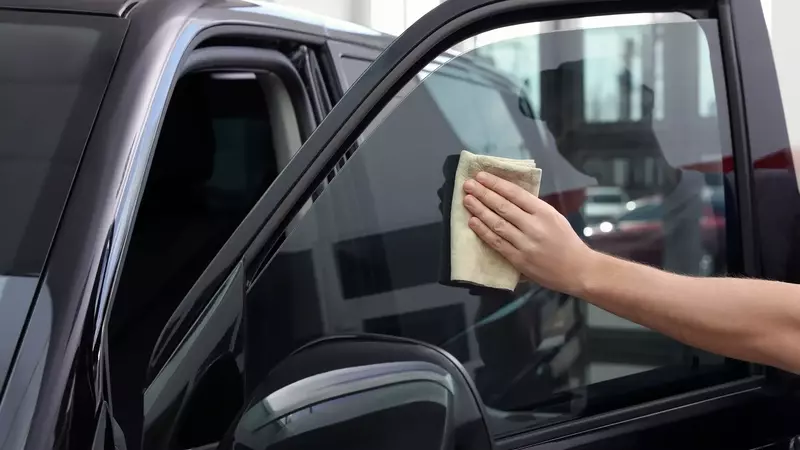Car window tinting has become increasingly popular in recent years. It not only enhances the look of your vehicle but also provides protection and privacy. With a variety of different types of car window tint available on the market, it can be overwhelming to choose the one that is best for you.
Each type of window tint has its own unique features, and it’s essential to understand the difference between them before making a decision. In this post, we will explain five different types of car window tints and their individual characteristics so that you can make an informed decision on the best style to fit your needs.
Whether you’re looking for a sleek and stylish appearance or increased protection from the sun’s harmful rays, we’ve got you covered with all the information you need.
1. What is car window tinting?
Car window tinting is the application of a thin film to the windows of a vehicle. This film is usually made from polyester material and is applied to the inside of the windows. The primary reason for car window tinting is to reduce the amount of sunlight and heat that enters the car’s interior.
Additionally, car window tinting also provides privacy and security, as it makes it difficult for people outside the car to see inside. Car window tinting comes in a variety of different types, each with its own unique benefits.
The most common types of car window tinting are dyed, metalized, ceramic, hybrid, and nano-ceramic. Each type of tint has its own levels of heat rejection, UV protection, and glare reduction. Dyed window tinting is the most affordable option and provides good heat and UV protection. Metalized tinting is made with tiny metallic particles and is excellent for reducing glare, but it can interfere with electronic signals.
Ceramic tinting is more expensive, but it provides excellent heat and UV protection without interfering with electronic signals. Hybrid tinting combines metal and dyed particles for a balance of benefits, while nano-ceramic tinting provides the ultimate in heat, UV, and glare protection. When choosing car window tinting, it is essential to consider the level of protection you need, as well as your budget and personal preferences.
2. Dyed Window Tinting
Dyed window tinting is a popular option for those looking for a budget-friendly option. This type of tinting is created by adding a dye to the film. The dye absorbs heat, which helps to keep your car cool.
However, it is essential to note that dyed tinting does not provide as much heat reduction as other types of window tinting. Dyed window tinting is also not as effective at blocking UV rays as other types of tint. One of the benefits of dyed window tinting is that it can come in a variety of colors, which can be a fun way to customize your car’s look.
Additionally, dyed window tinting can help to reduce glare, making it easier to see while driving. However, over time, the dye in dyed window tinting can fade and become discolored, which can detract from its appearance. If you are on a tight budget and are primarily looking for a change in appearance, dyed window tinting may be a good option for you.
3. Metalized Window Tinting
Metalized window tinting is a type of window film that is made from tiny metallic particles that reflect sunlight. This type of tinting is excellent for reducing glare and heat and is often used in hot climates. One of the advantages of metalized window tinting is that it is very durable.
The metallic particles help to reinforce the tinting film, making it less prone to scratches and tears. Another benefit is that it can also provide a high level of privacy. The metallic particles create a reflective surface that makes it difficult for people to see inside your car. One potential downside of metalized window tinting is that it can interfere with cell phone and GPS signals.
The metallic particles in the film can block the signal, making it more difficult to get a clear connection. However, many newer metalized window tinting films have been designed to minimize this interference. Overall, metalized window tinting is an excellent choice for people looking for a durable and effective way to reduce heat and glare, while also maintaining a high level of privacy.
4. Ceramic Window Tinting
Ceramic window tinting is one of the newest types of window tinting available in the market. This type of tint is made of ceramic nanoparticles that are small enough to be invisible to the naked eye. This makes ceramic window tinting an excellent option for those who want to preserve the original look of their car’s windows. The ceramic material used in this type of tinting is highly effective at blocking UV rays and heat from entering the car. This means that it can keep your car cooler during the summer months, and it can also help protect your skin and eyes from harmful UV rays. Additionally, ceramic tints are more durable and long-lasting than traditional tints.
They do not fade or crack easily, and they are less likely to bubble or peel over time. However, the downside to ceramic window tinting is that it is relatively expensive compared to other types of window tinting. But if you’re looking for a high-quality and long-lasting option, then ceramic window tinting is definitely worth considering. visit kazinfotime for more information
